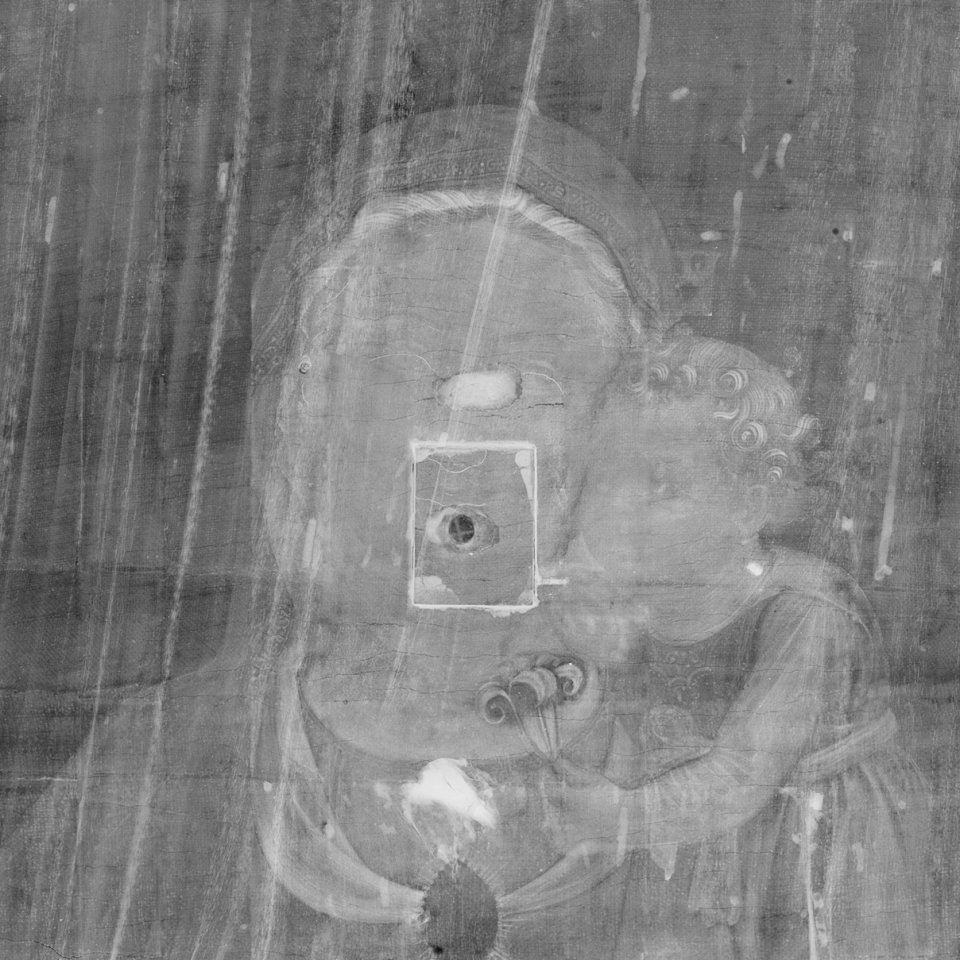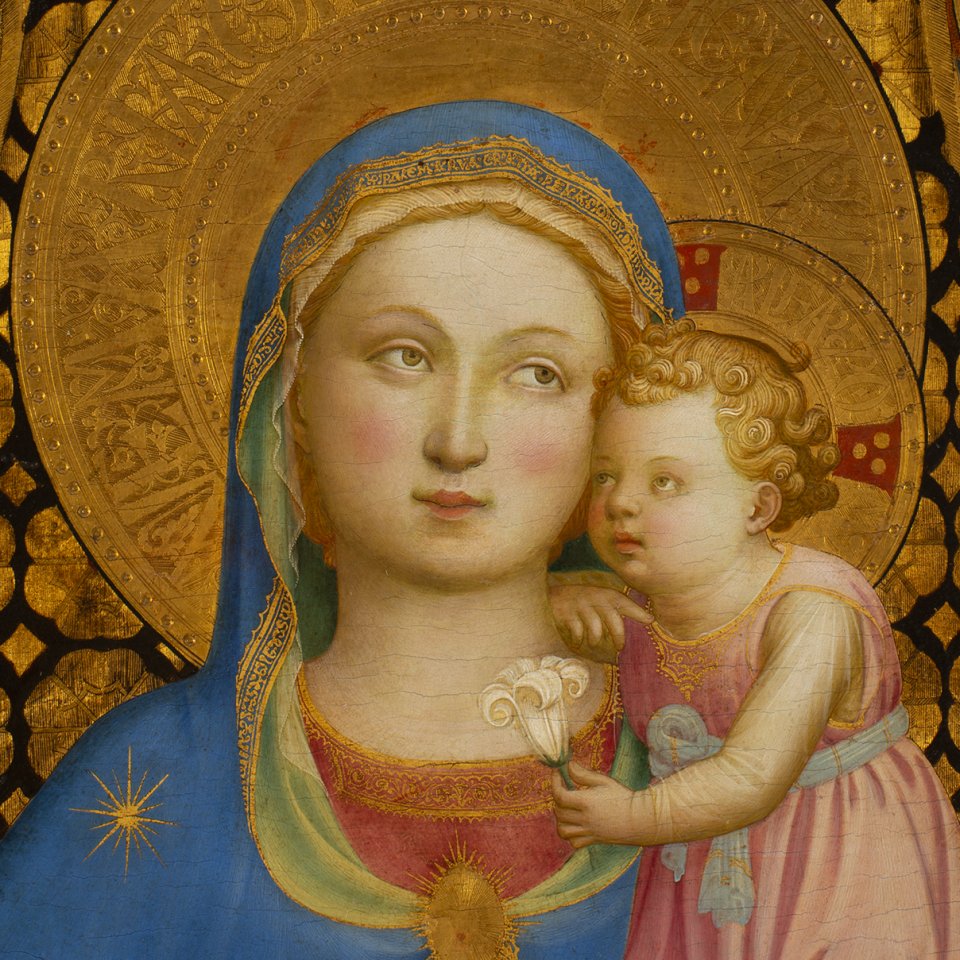Fra Angelico, The Virgin of Humility.
El vídeo de arriba es para uso exclusivamente decorativo dentro de está página.
Restoration and technical study
In this small exhibition the Restoration Department presents the results and conclusions of the technical studies conducted on The Virgin of Humility, one of Fra Angelico’s most iconic paintings belonging to the collection of the Museo Nacional Thyssen-Bornemisza, on long-term loan to the Museu Nacional d’Art de Catalunya (MNAC).
The project, implemented with the support of the Bank of America, has made it possible to restore this magnificent painting and has revealed the most interesting aspects of its creative process: from how the picture was conceived to how the artist worked.
The study was carried out using the various investigative methods commonly employed by museum laboratories: X-radiography, infrared reflectography, analysis of the artist’s materials and exhaustive photography. Together they enabled us to determine the technique, the composition of the materials and their distribution in different layers, and the variations and alterations made by Fra Angelico.
The aim of the restoration was to recover the subtlety of the flesh tones, the delicacy of the textures and the overall atmosphere of the painting. The work has also regained its balance and depth, and its appearance is now much closer to its original state.
Recovering The Past
The restoration process was complex due to the nature of the picture, which was executed using different materials and techniques. The original atmosphere of the composition was distorted and its appearance was rather dull.
Restoration work involved eliminating the coats of aged varnish that were obscuring the interpretation of the picture and removing overpaint to restore the balance of deteriorated colours.


These actions made it possible to restore colours, volumes and nuances lost over time in the flesh tones and drapery folds, which originally displayed very rich subtle hues.
Painting Process

Cross-section of the micro sample obtained from the blue-redish color of the angel musician.
Fra Angelico used egg tempera for the flesh tones and clothing of the figures, achieving superb nuances such as the transparencies of some fabrics by means of glazes.
In the cross-section, Fra Angelico´s use of his technique is observed. The procedure consists in the application of successive red and blue transparent layers. The former being of red lacque pigment with kermes colorant, followed by a blue layer of lead white and lapis lazuli, but with the right amount of calcium carbonate for it to offer a special transparency, that allows the red from the layer underneath be seen.
The Golden Decorations
The artist made indented decoration in the gilded areas using techniques such as punching. These techniques enabled him to emphasise the design, achieving a surface with volume, texture and relief with architectural qualities.
Some of these motifs may have been executed using templates.
There are small repeated motifs impressed in the gold using tools such as a punch. The artist created a simple pattern that was repeatedly impressed into the gilded surface by means of sharp, precise blows.
He also drew incised patterns in the background damascening, and to decorate the haloes of the Virgin and Child

The X-Ray
The comparison between the X-ray image and the visible image shows the change in the face of the Virgin. The white lines that appear in the x-ray, correspond to the initial incisions the artist made, to be able to place the eyes, nose and mouth. On the final layer, he modifies this placement and paints the eyes in a more elevated position.
X-radiography detected extensive damage to the support, ranging from woodworm tunnels to knots in the wood (a natural flaw) and very deep damage in the Virgin’s face.
The documentary research and technical studies led me to develop a hypothesis about the existing damage to the work.
Two oval-shaped areas between 1 and 2 square centimetres in size are visible between the eyes and beneath the lips, where part of the paint was lost at some point. An orifice 6 millimetres in diameter running through the wooden support can also be seen in the lower loss.


The Technical Room
The Virgin of Humility is presented to the public in a special installation in room 11 of the permanent collection.
The work is exhibited in a chapel-like circular space, designed because of the restoration, and it reveals for the first time, the rear side of the panel. Exhibited at the same time are two antique instruments, represented in the lower area of the painting, at the feet of the Virgin and Child: a portable organetto, that belongs to a private collection, and a laud lent by the Generalitat Valenciana, inspired in the one represented in the frescoe the angel musicians (1472) from the Valencia cathedral.
Finally, a video shows the process of the restoration of the panel and the frame, and the complex creative process of the panel developed by Fra Angelico to elaborate the work.









